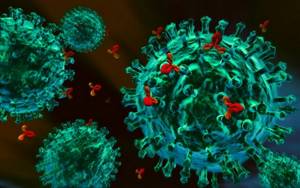You both know what you want
For some, finding the meaning of life is easier than understanding what they want in bed. It’s good if you’re not from this category: you know your erogenous zones, what you need for your orgasm and how to manage your sexual fantasies. It's even better when it's mutual and your guy is just as confident when it comes to sex. Knowing your needs helps you understand what is wrong in your intimate life with your partner and how to fix it. If you both cannot boast of such certainty, do not worry, it can be fixed. Explore your bodies, experiment, share your impressions and find what suits you.
Thrush when changing partners

Up to 80% of women know first-hand what candidiasis is. Sometimes it is enough to take an antibiotic, endure stress or eat sweets so that the characteristic symptoms do not take long to appear. But when thrush occurs when a partner changes, there is reason to think: is this just a reaction to an unfamiliar microflora or is the new man a carrier of the infection?
What will the article tell you?
Don't be afraid to talk to each other about frank topics

To fully satisfy each other, a standard set of knowledge about pistils and stamens is not enough. It's hard to give pleasure if you do it at random. Therefore, your willingness to discuss intimate topics is one of the signs of sexual compatibility. If a guy openly talks about his preferences, and you remain silent and do not admit that he is bad in bed, both of you will not be satisfied with your sex life.
Compatibility tests
Tests to determine incompatibility and its type are prescribed by a reproductologist or gynecologist who is seeing a married couple. Several research options are taken to identify the exact cause of infertility.
- the first option helps to find out about the existing pathology of a woman’s microflora. To do this, after sexual intercourse (no later than 5 hours), a smear is taken from the vagina, the number of dead sperm, if any, is determined;
- A blood test allows you to determine the presence of antibodies relative to your sexual partner. Genetic research and Rh conflict are established in this way;
- the third research option to determine pathology is based on the amount of ASAT in the blood;
- MAR analysis also helps determine genetic incompatibility.
If there is suspicion, the doctor prescribes several tests in a row.
Don't judge your partner's wishes

The key to candor is a positive attitude. People find it difficult to talk about sex for fear of being judged. Intimately compatible partners will not shame each other for their preferences, no matter how strange they may seem. This does not mean that you must unquestioningly fulfill your partner’s wishes. Do not forget the main principle of any sexual practice - voluntariness. But if you are positive and open to new experiences, you can find a solution that suits both of you. Judging doesn't even give you and your boyfriend a chance to improve your sex life.
Anatomical sexual disharmony
The correspondence of the male and female genital organs is very important for the technique of sex - disproportion in size often becomes the reason for the lack of sensual pleasure during sexual intercourse. Female physiology is designed in such a way that in its normal state the vagina has an average length of 7.5-10 cm. The first number refers to its front wall, the second to the back. This means that the depth of the passage is 10 cm, but during arousal it increases by another 5 cm. The average length of the phallus in an erect state is 15 cm. So, if we compare the average sizes of male and female genital organs, we will notice a certain correspondence. In addition, the vagina is very elastic - there is even the concept of “vaginal accommodation”, meaning that during a long-term relationship, the female genitals adapt to the male ones. In this regard, most sexologists are sure: after some time after the start of sexual activity, a couple achieves harmony in sex.
Your libidos are similar

One of the most obvious signs of compatibility is that you have approximately the same level of sexual activity. This usually becomes clear when the sweet-bouquet period has passed, your hormones have calmed down and you have entered your normal sexual rhythm. There is no consensus on how often couples in healthy relationships should have intimacy. The only more or less specific criterion is the coincidence of libido. This is one of the important factors for a happy life together.
Types of incompatibility
Practicing doctors and scientists have discovered the types of sexual incompatibility between spouses. Among the forms of this pathology are:
- influence of blood type or Rh factor;
- immunological reaction;
- genetic disorders;
- microflora reaction.
It is worth considering in more detail each type of sexual disagreement between a man and a woman.
Immunological factor
The immunological conflict is associated with the emergence of antisperm antibodies, which slow down the sperm, lead to gluing, preventing them from fertilizing the egg. For certain reasons, the female body begins to perceive male semen as an antigen.
The causes of ASA in a woman are the presence of inflammatory processes on the mucous membrane of the genital organs, the presence of these antibodies in the spouse, infectious diseases, IVF attempts, unprotected anal intercourse. You can find out about the presence of ASA by passing the Shuvarsky-Sims-Guner postcoital test and the Kurzrock-Miller test; a man is advised to take a spermogram.

It is impossible to cure immunological pathology, since antibodies are the body’s memory of hostile bodies. To reduce sensitivity to male sperm, the use of condoms, antihistamines or corticosteroids is prescribed.
The second type of immunological incompatibility is the HLA factor. In the case of a high match of leukocyte antigen alleles, the likelihood of miscarriage increases. Spouses with recurrent miscarriage experience 2-3 coincidences. The embryo is recognized not as a fetus, but as a cluster of mutated cells against which HLA proteins fight. This problem occurs mainly among consanguineous spouses.
Rh conflict - is it really the cause of infertility?
Incompatibility of Rh factors or blood groups is no longer a difficult pathology to correct. This is due to the fact that in the presence of such incompatibility, before conception and at 28 weeks of gestation, the woman is given an injection of immunoglobulins. It is important to know which blood groups are incompatible, since timely identification of the problem contributes to the preservation of the fetus. In case of complex Rh conflict, intrauterine blood transfusion is practiced.
Rh conflict in the absence of immunoglobulin injections sometimes does not prevent the bearing of the first child; in the case of a second pregnancy, complications may arise. Rh conflict is fraught with miscarriage, oxygen starvation of the fetus and congenital diseases. Rh incompatibility occurs when the factor is negative in the mother and positive in the fetus.

Genetic incompatibility - a myth or a real threat to offspring
Gene incompatibility is one of the most difficult causes of infertility to correct. A genetic conflict manifests itself in the inability of relatively healthy spouses to give birth to a healthy baby. Genetic abnormalities of the fetus are associated with the presence of incorrect genes in the blood of the partners. Pathological changes in fetal genes can occur in the following cases:
- the woman’s age at conception is more than 35 years;
- congenital genetic diseases of the partner - hemophilia, cystic fibrosis, etc.;
- exposure of a pregnant woman to radiation or chemicals;
- consanguineous marriages;
- habitual miscarriage or fading of pregnancy;
- heredity.
Pregnancy in the case of genetic incompatibility is possible using assisted fertilization methods.

Microflora incompatibility
The cause of infertility, which consists in the incompatibility of the microflora of partners, is quite rare, but can be treated. Based on the fact that the microflora of spouses represents the presence of pathogenic and beneficial bacteria, when immunity decreases, the number of pathogenic bacteria increases.
Microflora compatibility is possible if the number of pathogenic bacteria is reduced to a minimum. The main cause of conflict is an imbalance in the bacteria of one of the partners. The causes of dysbacteriosis are:
- endocrine system disorders;
- candidiasis;
- sexual infections;
- inflammatory diseases of the genitourinary system;
- taking antibiotics;
- improper hygiene;
- postpartum period.

Signs of the presence of dysbiosis are the classic accompanying symptoms - itching, burning, abnormal discharge, discomfort during sexual intercourse, swelling of the genitals, the appearance of microcracks on the penis.
If you have such symptoms, you should go to the doctor. He will prescribe tests for bacterial cultures, sexually transmitted infections, candidiasis, and hormones. Depending on the nature of dysbiosis, a specialist will eliminate the cause using medication and prescribe probiotics to restore the microflora. It is worth noting that such a conflict only in 2-3% of cases causes infertility.
Ready to compromise

If your libidos are significantly different - a guy needs sex every day, but you only need sex a couple of times a week - this does not mean that you have no chance. Here another sign of sexual compatibility comes into play - the ability to compromise. In order for your intimate life to be comfortable, one will have to learn to pacify their desires and sublimate energy into something else, and the other will have to make concessions and from time to time give their partner pleasure unilaterally.
How do signs and symptoms of incompatibility of sexual partners appear during conception?

Is incompatibility of sexual partners a risk for a woman who may lose her baby or be unable to conceive? A detailed description of the problem of incompatibility, manifestations, symptoms and types of pathology below.
Infertility of a couple is not always explained by the presence of diseases of the genitourinary system or pelvic organs. Sometimes the reason for miscarriage or lack of conception is incompatibility of partners. Why does this happen, how to recognize it, and is there a chance of recovery?
How is candidiasis transmitted?
In fact, there are several main routes of transmission of Candida albicans.

Let's look at how candidiasis is transmitted:
- Through household items.
- Self-infection is possible.
- Infection during the neonatal period.
- Sexual path.
Household way
Any fungi, including Candida, reproduce using spores that can survive in the environment for a long time.
Thus, when spores of yeast-like fungi get on bed linen, personal hygiene items, and household items, the latter become a source of infection. The oral cavity is rich in microorganisms, which may include Candida, so it is advisable for each family member to have a separate set of dishes, especially if someone is diagnosed with Candida carriers.
In addition to this, infection is possible when using public showers in swimming pools and gyms, where fungi can be found on taps, handrails, and trays. Particular caution should be taken when visiting public baths and saunas. If there is insufficient or no disinfection of premises, fungal spores may remain in them, which, when entering the body, become the cause of illness.









